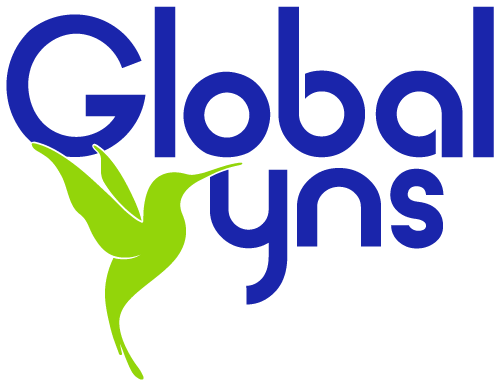Bilingual meetings, multilingual virtual events, webinars, symposiums, or conferences are spaces where people get together to learn new information, share ideas and connect—they are unique opportunities to get your message across to broader audiences and get immediate feedback. But multilingual virtual events, big or small, do not organize themselves. They require hard work planned weeks, months, or even years in advance. Successful multilingual virtual events require a collaborative effort in which interpreters and translators play a significant role. We encourage you to include our Top 10 best practices for virtual events in your event checklist.
Imagine for a second that you are invited to participate in a virtual conference. You are very excited about the event because you will learn something new, share your thoughts, and connect with other fellow participants. You log in and soon realize that no one speaks your language. You cannot understand the slides shown on the screen, and you missed the instructions on “how to access language interpretation” because they were giving it in a language you do not understand. Frustrated and quite irritated, you ask for help in the chat. No one replies to you because the person in charge of monitoring the chat does not understand your language. How would you feel if something similar to this would happen to you? Well, this happens very often when language acquisition is not prioritized.
When planning for a multilingual virtual event, do not leave language access at the bottom of your list. You are taking the risk of alienating audiences and missing a huge opportunity to bring everyone together in a multilingual space, or as we here at GLOBAL YNS like to call it… an international fiesta!
If you are working tirelessly to bring people together for a common goal, we invite you to follow our best practices for virtual events. The purpose of these good practices is to ensure your audience feels welcomed, respected, and represented. Please remember that a native language is a defining characteristic. It informs our culture and identity, so it is essential to embrace language diversity from the beginning. If you follow this practice, you will create a multilingual space where people can freely communicate, discover, and learn about one another.
Our TOP 10 Best Practices for Virtual Events
- Promote and communicate
- Sound-check
- Ensure Balance of English and your audience language(s) in the event’s visual components
- Explain how to access language interpretation in your audience language
- Use a headset, tabletop mic, or earbuds with a built-in microphone when speaking so that the interpreters can hear you clearly
- Ensure proper camera positioning for clarity while presenting
- Speak clearly, and do not speak too fast
- Do not present over a Wi-Fi or mobile data plan connection
- Keep your microphone muted when not speaking and mute other participants
- Share event materials in advance with the interpreters
#1 Promote and communicate
Announce that interpretation services are available from the onset, on a website, or in promotional materials (social media, flyers, email blasts). Let everyone know in advance the type of language services that are available and the platform you are utilizing. By advertising language services in promotional materials, you send a clear message about your intention of creating a multilingual space from the start.
#2 Sound Check
Test the platform and interpreting channels one or two days before the event. Each platform is different, and event organizers need to be familiar with their tools and features. Designate a technician in advance and do not leave this responsibility on the presenters and panelists. We recommend at least one audio check two days before the event and one fifteen minutes before the start time on the day of the event.
#3 Ensure a balance of English and your audience language(s) in your event’s visual components
Show slide material in English and target language(s) side by side when possible. Always make sure that the welcome slide contains a greeting in your audience language. The welcoming message sets the event’s tone, so seize the opportunity by inviting participants to embrace multilingualism. Remind participants that language services are available for those who need them.
#4 Explain how to access language interpretation in your audience language
More than a good practice, this is a must! Do not assume that participants will arrive at your event knowing how to access language services. The announcement needs to be made in all the languages you are offering language services. No matter how easy and apparent accessing language services is for you, your event must start with explaining the process step by step. We recommend you use visual components to facilitate understanding. Be ready to assist participants who, despite the audio explanation and visual instructions, have difficulties accessing language services. Here, technicians come in handy; sometimes, those having difficulties need one-on-one help to troubleshoot while speakers continue running the event.
#5 Use a headset, tabletop mic, or earbuds with a built-in microphone when speaking so that the interpreters can hear you clearly
Interpreters can only interpret what they hear and understand, so make sure you use a mic and headset. You do not need something fancy, but if you wish to improve audio quality and have a better experience, a good headset is worth every penny.
#6 Ensure proper camera positioning for clarity while presenting
Interpreters are paying attention to their glossaries and speakers. Looking at the speaker’s lips, facial expressions, and hand expressions is essential to interpreters simply because communication is more than words, facial expressions in particular add meaning and clarification. Nowadays, we are all movie stars, and we need to see the camera as our friend, enjoy yourself, make sure the lighting is good and allow others to see you.
#7 Speak clearly and do not speak too fast
Being in front of a camera and presenting can be nerve-racking but do not get carried away. Communicating at a normal pace is extremely important because interpreters travel one sentence behind the speaker. If the speaker goes too quickly, interpreters won’t interpret all the message in its entirety. You can manage the pace of your speech through controlled breathing. Take deep breaths before you go live, and continue to breathe in a controlled manner throughout your presentation. Fast speech is an interpreter’s arch enemy and places non-native listeners at a disadvantage.
#8 Do not present over a Wi-Fi or mobile data plan connection
A hard-wire Ethernet connection is faster and more reliable and secure than Wi-Fi. Ethernet connections are insulated from interference and crosstalk and are unaffected by the presence of physical objects. When streaming video or working with bandwidth-hungry platforms, the faster speed of an Ethernet connection will provide a better experience with faster data transfer.
#9 Keep your microphone muted when not speaking and mute other participants
Interpreters need to hear the speaker clearly to be able to interpret. A loud and noisy background will prevent interpreters from listening and comprehending. Remember, interpreters can only interpret what they hear and understand. By muting participants, you direct the participants’ full attention to the main floor and improve the overall audio experience. Many platforms allow meeting hosts to mute participants. Test the platform in advance, get familiar with this feature, most importantly, inform your participants that all mics are silent by default and they need to unmute themselves or utilize the raise hand feature if they wish to speak.
#10 Share event materials in advance with the interpreters
This is in fact is a golden rule. Sharing event materials is the simplest way to ensure interpreters will perform at their best. The sooner interpreters receive the materials, the better prepared they will be. PowerPoint presentations, agendas, run of show, course materials, scripts, lyrics, names of participants, roles, and pronouns are important for interpreter preparation. Interpreters need to read the materials in advance and put a glossary together. Interpreters study the speaker’s biographies and research the event’s subject to make sure they are fully prepared and aware. Do not assume interpreters are experts on all topics. In fact, interpreters specialize in specific areas. A qualified medical interpreter could struggle during a legal assignment. By the same token, a legal interpreter may need to review medical terminology before accepting a medical assignment.
Do not procrastinate! Translation and interpretation needs are sometimes underestimated, and costs tend to increase significantly as the event draws closer. Therefore, it is wise to contract from the start, with the help of language professionals such as GLOBAL YNS, experience meets high demand. Be careful not to use machine translation software, which provides inadequate results. Poor translation impedes clear communication with your audience and can ultimately be embarrassing to your organization.
Here at GLOBAL YNS, we offer superior language services. Our goal is to build connections through languages; to include people, families, and communities in more ways. We invite all our clients to incorporate these 10 practices for virtual events into their planning checklist. In doing so, you are welcoming the unique GLOBAL YNS approach to further assist in the incorporation of multilingual connections also known as an “international fiesta”. We do not charge extra for preparation time, rehearsals, audio checks, and other steps required to provide you with superior language services. We advocate for good practices because we know they are directly involved with your event’s success. We want your event to be as impactful and meaningful as it can be to your participants, no matter their language.

GLOBAL YNS
Offering Superior Language Solutions,
Where quality is our Priority
